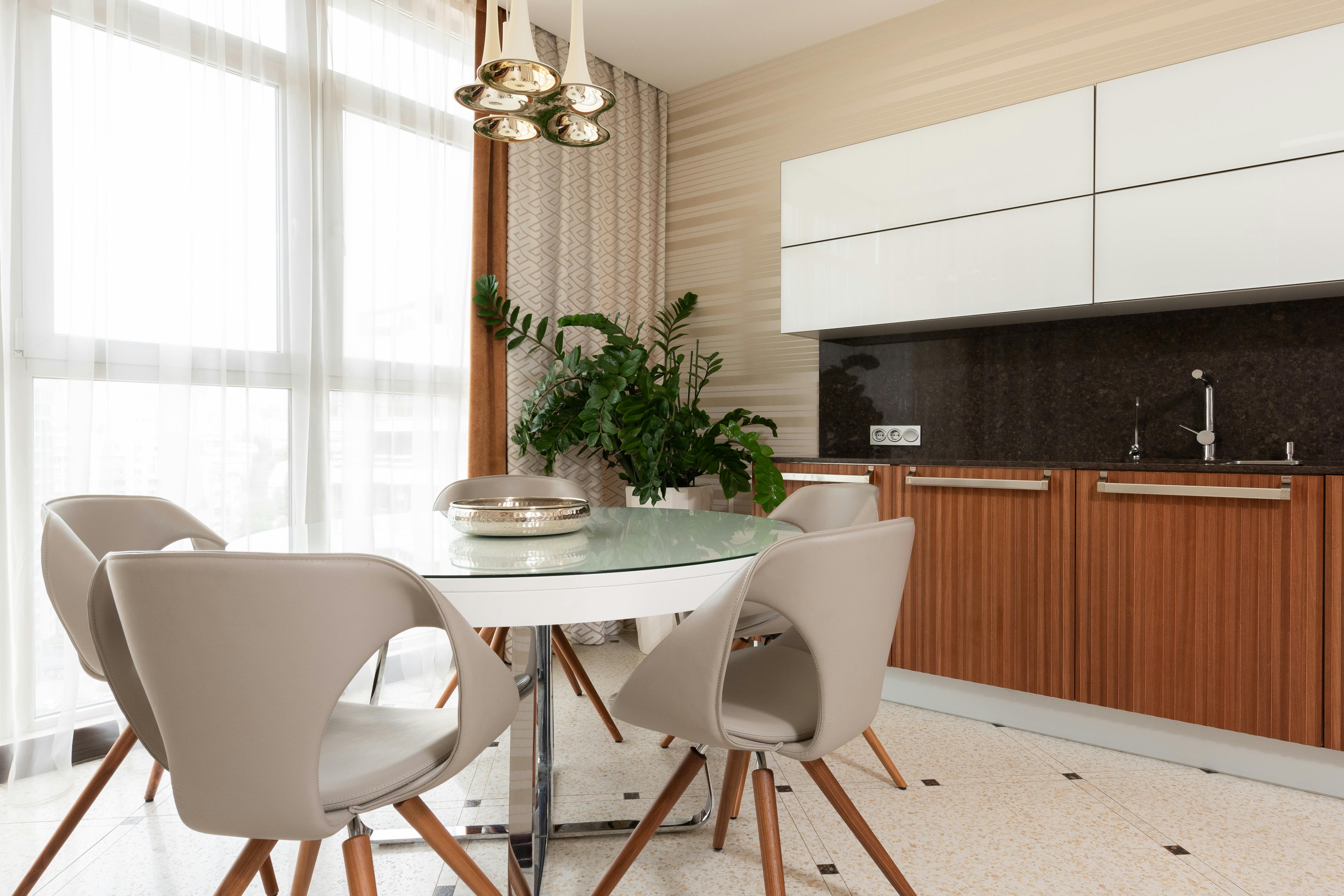A tiled backsplash spices up the room and transforms a small wall area into a tiled paradise. Most backsplashes involve a kitchen wall. Whether it’s a basic square pattern or a fancier pattern with different shapes, the process is the same. The basics for tiling a wall include adhesive and grout. As long as your tile is level, which is easy to achieve with a kitchen wall, your backsplash is attractive.
Instructions
1. Sand the wall with 100-grit sandpaper. You don’t need to remove all the paint, just roughen the surface so the decal will adhere more easily to the wall.
2. Shape the tile to your liking. Before you install the tile, know how you want it to look. Put a few pieces on the wall first without any adhesive. For a backsplash, you may want trim along the bottom and standard 6-by-6-inch tile along the rest of the walls.
3. Measure and cut the tile to the pattern you want. For thin trim along the bottom or edges of the wall, decide on the size of the trim. Cut the tile to the recorded size with a tile cutter.
4. Apply the tile adhesive to the wall with a notched trowel. There are many different types of tile adhesives, some with mortar and some without. Read the manufacturer’s instructions to determine if you need to mix the adhesive before applying it. Plane the wall at a 45 degree angle with the notched trowel. Do not apply an excessive amount as it covers the grout lines. Apply the adhesive to small areas of the wall. Once the tile is laid over the adhesive, go ahead and apply the adhesive to another small area.
5. Lay the tile on the wall. Start by placing a tile piece in any of the bottom corners of the wall. Align the bottom of the tile with the bottom of the wall and the edge of the counter, making sure the tile is level. Continue laying another tile piece next to the existing tile. Repeat this process until the wall is covered. Always laying the next tile next to or directly on top of an existing tile ensures that the wall is level.
6. Place spacers between each tile as you lay the tile. Spacers allow for uniform grout lines to be formed. Insert a space at each tile corner. Some tiles come with pre-built spacers and do not require the use of plastic spacers.
7. Let the adhesive dry. Read the manufacturer’s instructions for drying time, as each adhesive is different. Remove the spacers once the adhesive dries.
8. Grout the tile with a grout trowel. Hold the grout trowel at a 45 degree angle and brush the grout along the length of the tile, applying the grout at the grout lines. A bead of grout goes a long way, as long as you brush the grout at a 45 degree angle and scrape the excess down to the unfilled grout lines.
9. Dip a sponge in cold water and dry it. Brush it over the excess grout on the tile, then brush along the grout lines. Use your finger to apply a little pressure as you go over the grout lines. If grout remains on the tile after an hour of sponge cleaning, use another damp sponge and go over the tile again.
